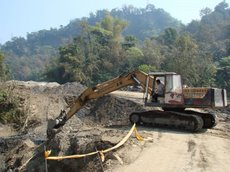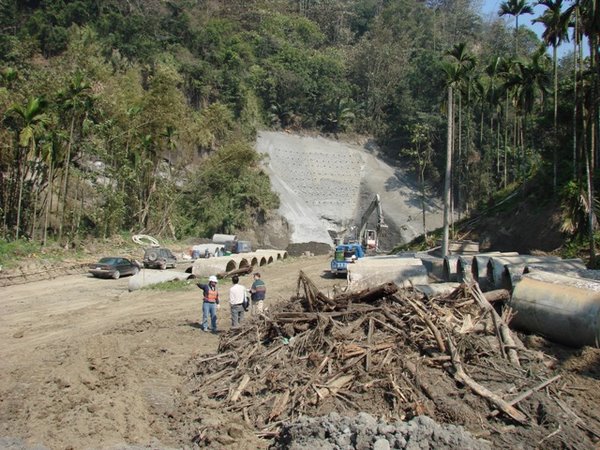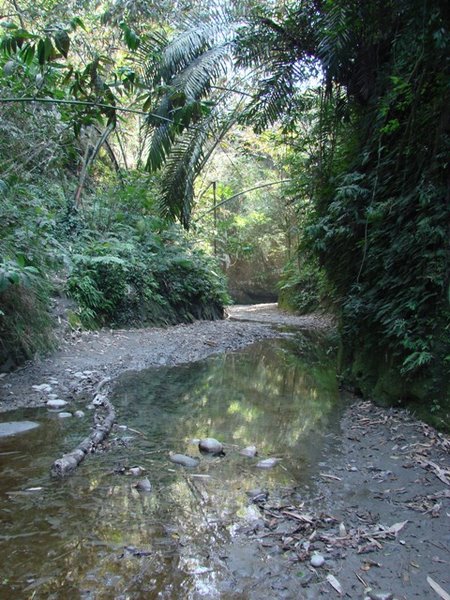With the EPA threatening legal action against Environmental Impact Assessment Committee member, Robin Winkler, over his alledged comments quoted in Tuesday's edition of the Chinese-language United Evening News, NGOs and Robin Winkler have hit back at the EPA. Here's the press release from this morning's press conference held in Taipei.
Press Release
Taipei, 24 May 2007
Robin Winkler, in his role as director of the Taiwan Wild at Heart Legal Defense Association, joined an alliance of several environmental ngos in filing a demand letter with Taiwan’s Environmental Protection Administration today, to be followed by a lawsuit if the EPA fails to take appropriate action within the sixty day time limit stipulated by the Environmental Impact Assessment Law.
The groups allege that the EPA, through its negligence and possibly with outright intent, has failed to adequately protect Taiwan’s environment, threatening the health, safety and viability of people throughout the island, future generations, and the well being of other species and their habitat. The specific case involves a reservoir in Yunlin County, central Taiwan that will be used primarily to supply water to the likes of the China Petroleum invested plant, Formosa Plastics Steel Plant and an assortment of industrial parks.
The documents filed with the EPA today specify instances where interpretations of laws and regulations by the EPA have been done without adequate study or consultation with interested parties, resulting in what the parties allege “has the characteristics and effect of intentionally benefiting developers (開發單位), government agencies, local and national politicians, and business groups (財團).”
“While there may be individuals within the EPA who could, if they chose, do something about the tragic state of Taiwan’s environment, the root of the problem goes beyond individuals and points to a system that is rotten to the core” said Pan Han-sheng, General Secretary of Taiwan’s Green Party in a statement supporting the action.
The groups cited Taiwan’s very poor showing in a 2005 survey by the World Economic Forum on the Environmental Sustainability Index. Out of 146 countries, Taiwan came in second – second in terms of being the least sustainable country. The group pointed out that Taiwan’s ranking of 145, with only North Korea achieving a lower score, is not at all surprising given the apparent “race to the bottom” by Taiwan’s industry and their competent government agencies in charge (目的事業主管機關).
When interviewed about the Hushan Reservoir case, Ho Zongsyun, of the Taiwan Environmental Protection Union, pointed that Taiwan ranks number one among developed countries as to increased CO2 emissions during recent years, noting that per capita emissions in Taiwan are already 3 times the world average. Also noted was the very low efficiency of Taiwan’s industries as a whole when its emissions are compared to industrial output and GDP.
In addition to illegal and anti-environmental interpretations of laws and regulations that have benefited business groups and government officials at the expense of Taiwan’s environment and sustainable society, the accusations set out violations of a number of other laws including the Cultural Resources Protection Act, the Environmental Impact Assessment Act, Civil Code, and Criminal Code.
According to representatives from environmental groups in Yunlin and Taijhong, the illegal construction is within or contiguous with an area that has been listed as an important bird area by BirdLife International, the largest international bird conservation organization in the world.
The area is one of the major breeding sites for the Fairy Pitta (Pitta nympha). This beautiful migratory songbird, which is legally protected under Taiwan law, is listed as a threatened species on the International Union for Conservation of Nature and Natural Resources (IUCN) Red List and is also listed under the Convention on International Trade in Endangered Species of Wild Fauna and Flora (CITES), yet, these facts about the Fairy Pitta were overlooked either deliberately or negligently overlooked in the Environmental Impact Assessment (EIA) approved by the EPA in May 2000.
The reservoir will not only impact very negatively on the Fairy Pitta but also threatens to flood the habitat of a number of other threatened and protected bird, plant, amphibian and other species. The activities surrounding the construction and operation of the reservoir may wellalso deal a devastating blow to the survival of Taiwan’s unique and already fast declining Indo-Pacific humpback dolphin (Sousa chinensis) population. Industrial development resulting in habitat loss and the reduction of the flow of fresh water into the Sousa dolphin’s habitat is so obvious that even the developers in a recent EIA application admitted that "loss of fresh water is one of the major sources of the disappearance of the Sousa" (8th Nahptha Cracker EIA report, section 7.2.3).
Finally, a high level government official who supports the coalition’s action but who asked to remain anonymous, of commented, “It is really ironic how our government can go around and tout the amazing beauty and diversity of the island and even make public events of hosting foreign ambassadors at birdwatching events, when all the time they are engaged in the mad and rapidly increasing devastation of Taiwan’s few remaining lowland natural areas under the guise of former Premier Su’s “Big Warmth, Big Investment” policy.
Also see:
Sixty Days are up:-The EPA Responds to the Alliance's Legal Threats
Environmentalists give the EPA sixty days to stop Hushan
Thursday, May 24, 2007
NGOs set to take on the EPA
Posted by
Wild at Heart Legal Defense Association
at
12:38 PM
![]()
Subscribe to:
Post Comments (Atom)








No comments:
Post a Comment